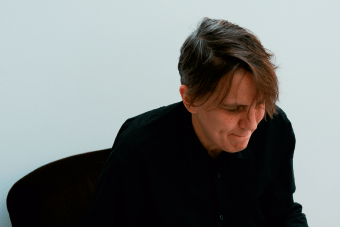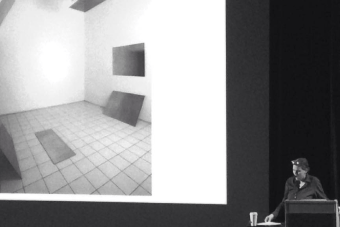Most recently, Sonya Clark is that artist whose message has been amplified to the benefit of many through the Rappaport Prize. Clark, a Washington, D.C. native and Professor of Art at Amherst (Mass.) College, was the 2020 Rappaport winner for a career that has and continues to powerfully address Black experience in the United States.
Clark is known for using everyday items in her work, such as hair combs and flags, in ways that both celebrate the contributions of Black culture and take on the racial injustices that have plagued American history.
“Unraveling,” for example, is a thread-by-thread, public unwinding of the Confederate battle flag. “Obama and Lincoln” is a portrait of President Barack Obama created only with pennies. And “Madam C.J. Walker” is a breathtaking, floor-to-ceiling portrait of the African American entrepreneur, philanthropist and social activist – made entirely of black combs.
Clark called the Rappaport Prize, “a verdant promise, one that will help germinate the creative impulses my ancestors planted in my DNA long ago.”
Another creator whose mission to uplift has been magnified by the Rappaport Prize is Titus Kaphar, the 2018 winner. Based in New Haven, Conn., Kaphar is one of the country’s most innovative and provocative artists who physically reconfigures his own paintings and sculptures to rewrite commonly accepted historical narratives, reveal their unspoken truths and expose contemporary relevance in a way that reckons with American’s racial past.
And beyond his artwork, Kaphar has established NXTHVN (“Next Haven”), a $12 million nonprofit creative center in New Haven that provides residencies and empowers emerging artists and curators of color through education and access.
“He’s not only creating his own career, but he’s also spreading the love by empowering others,” Montross said. “When I think of these Rappaport winners, many of them have that sort of a profile.”
It is now a list 21 artists long, spanning back to Jennifer Hall in 2000, including Annee Spileos Scott (2001), Lars-Erik Fisk (2002), John Bisbee (2003), Debra Olin (2004), Sarah Walker (2005), Abelardo Morell (2006), Maria Magdalena Campos-Pons (2007), Ursula von Rydingsvard (2008), Dave Cole (2009), Liza Johnson (2010), Orly Genger (2011), Suara Welitoff (2012), Ann Pibal (2013), Deschenes (2014), Matt Saunders (2015), Barkley Hendricks, Sam Durant (2017), Kaphar (2018), Daniela Rivera (2019) and Clark in 2020.
“It’s kind of like being on the hometown team,” Saunders said. “The Rappaport Prize has served this kind of community function of making visible the breadth and depth of art that has happened outside of New York City.”
And it’s a community that takes pride in its lineage. As Titus Kaphar said upon getting the Rappaport call and reflecting on the group he was thereby joining, “I immediately understood the honor of being included.”
For Deschenes, the prize was not only a personal affirmation of her work, but in general an acknowledgement of the place the arts hold in society.
“It’s significant,” she said, “when the visual or practicing arts are considered alongside the sciences and the humanities, without hierarchy, when it’s not thought of as separate-from, but considered-with.
“That’s unique to the Rappaport Foundation.”





